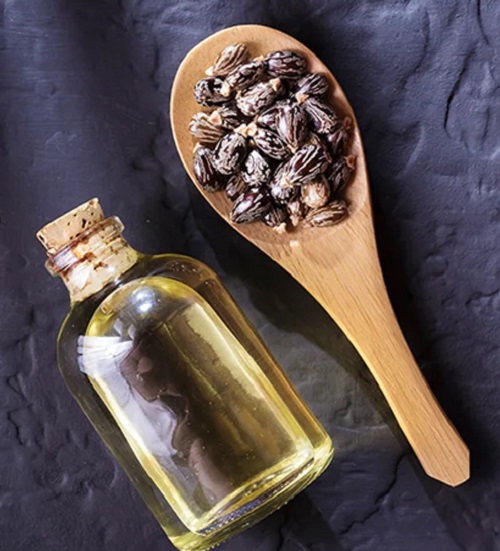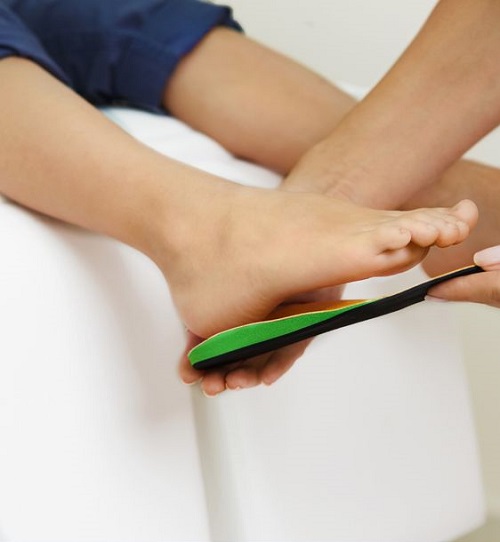Discover the healing properties and mechanisms of Castor Oil For Plantar Fasciitis and learn how it can be an effective option!

Plantar fasciitis is a common yet debilitating foot condition that affects millions of individuals worldwide. Characterized by intense heel pain, it can significantly impair one’s quality of life and daily activities. While various treatments have been explored to alleviate this condition, the natural remedy of using Castor Oil For Plantar Fasciitis has gained increasing attention.
Learn about Hexane in Castor Oil here
Understanding Plantar Fasciitis

Plantar fasciitis is a common foot condition characterized by pain and inflammation in the plantar fascia, a thick band of tissue that runs along the bottom of the foot, connecting the heel to the toes. This condition often results from excessive stress on the plantar fascia, leading to microtears and irritation.
Activities like running, prolonged standing, or wearing unsupportive footwear can contribute to its development. Plantar fasciitis typically manifests as sharp pain in the heel, particularly in the morning or after periods of inactivity.
Learn about Using Castor Oil for Rosacea here
Does Castor Oil Help Plantar Fasciitis?
Yes, castor oil can help plantar fasciities, managing its symptoms.
Rich in ricinoleic acid, a monounsaturated fatty acid, castor oil possesses anti-inflammatory properties that can alleviate the heel pain commonly associated with this condition. Massaging castor oil into the affected area before bedtime can penetrate deeply into the layers of the skin and muscle, reducing inflammation and promoting healing.
However, this remedy works better as a complementary remedy to the professional medical treatment. Combined with regular stretching exercises and proper footwear, using castor oil can indeed, be an impactful part of a comprehensive treatment plan for plantar fasciitis.
Can Castor Oil Help Psoriasis? know here
Potential Benefits of Castor Oil for Plantar Fasciitis
1. Direct Inhibition of Inflammation
The ricinoleic acid in castor oil directly interacts with the inflammatory mediators in your body, such as prostaglandins, to reduce inflammation. When applied to the heel and arch, it can target the inflamed plantar fascia, offering localized relief from pain and swelling.
2. Deep Tissue Absorption
Castor oil has a low molecular weight, which enables it to penetrate deep into the multiple layers of the skin and even reach the muscle tissue. This depth of penetration ensures that the anti-inflammatory properties work not just on the skin’s surface but also on the fascia itself, the connective tissue causing discomfort.
3. Vasodilatory Effects
The warming sensation often experienced when applying castor oil is an indicator of localized vasodilation, or the widening of blood vessels. This increases blood flow to the affected area, which can hasten the healing process by delivering more oxygen and nutrients to the inflamed tissue.
4. Facilitation of Stretching and Mobility
The fatty acids in castor oil can lubricate the skin and underlying tissues, making them more pliable. This increased flexibility can aid in performing the essential stretching exercises for plantar fasciitis more effectively, facilitating a quicker recovery.
5. Skin Barrier Enhancement
Castor oil forms a protective layer on your skin, sealing in moisture. This can be particularly beneficial if you have cracked heels or dry skin in addition to plantar fasciitis, as these secondary symptoms can worsen the primary condition by causing additional stress on the plantar fascia.
Explore about Using Castor Oil for Sinus and Headaches here
Effectiveness of Castor Oil Packs For Plantar Fasciitis
Castor oil is more than just an old folk remedy—it’s packed with ricinoleic acid, a substance known for its powerful anti-inflammatory effects. When you apply a castor oil pack to your sore heel and arch, you’re essentially delivering this natural anti-inflammatory agent to where you need it most.
Using heat, like a warm water bottle, makes the treatment even more effective by helping the oil seep deeper into your tissues. If you are into holistic practices, castor oil packs could be a super remedy to deal with the symptoms of plantar fasciitis.
However, Just remember, this isn’t a substitute for professional medical advice; but more of a helping hand in your overall treatment strategy. So, before you ditch your regular treatment plan, consult your healthcare provider to see if castor oil packs could be a good fit for you.
Here is a Guide to Using Castor Oil for Lice
How to Use Castor Oil for Plantar Fasciitis?
1. Direct Application
- Start by washing your feet thoroughly to remove any dirt or grime.
- Heat a small amount of castor oil in a microwave-safe dish for about 20-30 seconds. Make sure it’s warm, not hot, to avoid burns.
- Use your fingers to gently massage the warmed oil into the affected heel and arch area for about 5-10 minutes. This helps the oil penetrate deep into the tissues.
2. Castor Oil Foot Soak
- Fill a small basin with warm water.
- Mix in a generous amount of castor oil. You can also add a few drops of essential oils like lavender for added relaxation.
- Place your feet in the basin and let them soak for about 20 minutes.
3. Nighttime Treatment
- Before bed, apply a liberal amount of castor oil to the affected foot.
- Put on a pair of clean, cotton socks to help lock in the moisture.
- Leave the oil on overnight to allow for maximum absorption.
4. Castor Oil Pack
- Soak a clean cloth in warm castor oil.
- Lay the soaked cloth over the inflamed area.
- Cover the cloth with plastic wrap to keep it in place.
- Place a warm water bottle or heating pad over the plastic wrap.
- Leave it on for 20-30 minutes to allow the castor oil to deeply penetrate the skin.
- Carefully remove the pack and gently massage any residual oil into the skin.
- Wash the area with warm water and mild soap, if desired.
Learn about Using Castor Oil for Bruises here
Safety Considerations
- Prior to applying castor oil extensively, perform a patch test to rule out any potential skin irritation or allergies.
- If you have diabetes or underlying health conditions, seek guidance from a healthcare professional before using castor oil for plantar fasciitis.
- Avoid using castor oil remedies if you are pregnant, or breastfeeding.
Learn about Diluting Castor Oil here
Conclusion
Castor oil is indeed a fascinating option for those looking to augment their plantar fasciitis treatment plan. Its anti-inflammatory properties suggest it could be helpful, but the keyword here is “supplementary.” It’s not a one-size-fits-all solution and should be used as part of a broader treatment approach.
Always having a healthcare provider in the loop for personalized guidance is crucial, especially to ensure the oil doesn’t interfere with any other treatments you may be undergoing. So, while castor oil offer a promising, non-invasive way to potentially alleviate some symptoms, they’re just one piece of the puzzle when it comes to effectively managing plantar fasciitis.
Check out the Advantages of Castor Oil and Baking Soda here
FAQs
1. Is Castor Oil A Proven Treatment For Plantar Fasciitis?
While castor oil is considered a natural remedy with potential anti-inflammatory and analgesic properties, its effectiveness for plantar fasciitis may vary from person to person. It should be used as a complementary approach alongside other professionally recommended therapies.
2. Can I Use Castor Oil On Open Wounds Or Blisters Caused By Plantar Fasciitis?
It is not advisable to apply castor oil to open wounds, blisters, or broken skin caused by plantar fasciitis. The oil may cause irritation or exacerbate the existing condition. Instead, focus on addressing wound care separately and consult a healthcare professional if needed.
3. How Long Should I Use Castor Oil Before Expecting Results For My Plantar Fasciitis?
The timeline for experiencing results can vary. Some individuals may notice relief after a few weeks of consistent application, while others may take longer. Patience and consistency are key. If you don’t observe improvements over an extended period, consider consulting a healthcare professional for alternative treatment options.
4. Are There Any Specific Castor Oil Brands Or Types I Should Look For When Using It For Plantar Fasciitis?
When selecting castor oil, opt for organic, cold-pressed, and hexane-free varieties for the highest quality. While there may not be specific brands exclusively suited for plantar fasciitis, these attributes ensure you are using a pure and natural product. Always perform a patch test to check for any allergic reactions before widespread use.




